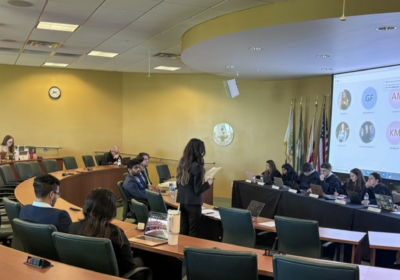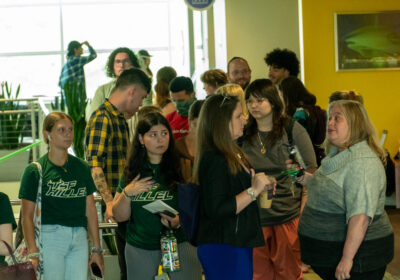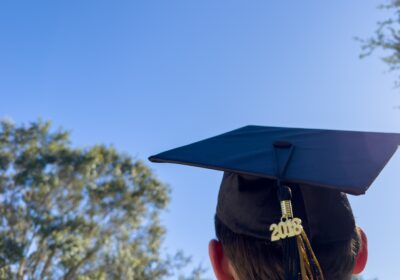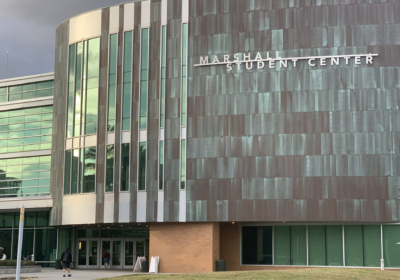Community advocates for preservation of untouched land, seeks action from university
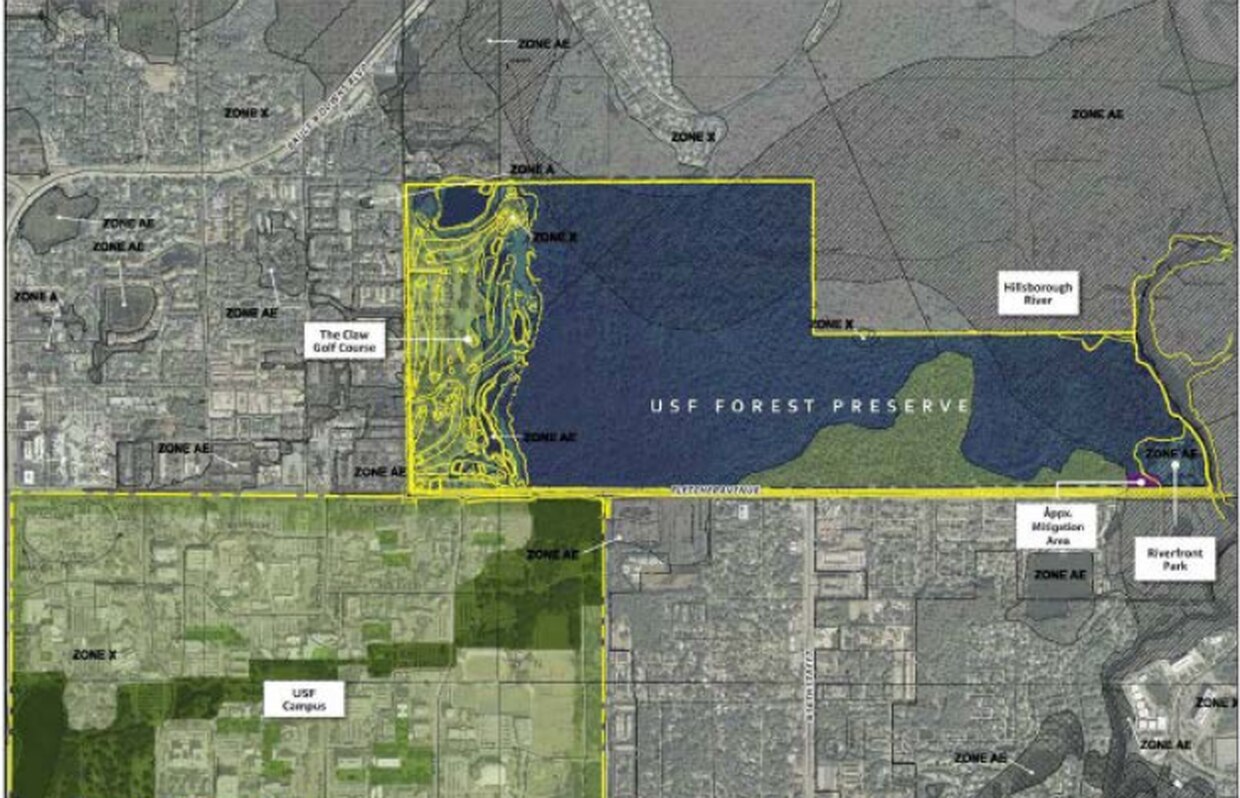
As concerns grow regarding the protection of USF’s Forest Preserve against future development, community members are rolling up their sleeves to make sure their voices are heard and the land remains untouched for years to come.
The Hillsborough Board of County Commissioners voted unanimously Wednesday afternoon to begin investigations on the conservation value and acquisition of USF’s northern property, which includes the USF Forest Preserve, through the Jan K. Platt Environmental Lands Acquisition and Protection Program (ELAPP).
The commissioners expressed concern about the wetlands and sandhills located within the preserve. They noted they would be cautious when evaluating whether or not the land could be recommended for the ELAPP program, which would help permanently preserve the land, since the land is owned by USF.
Despite concerns, the commissioners were unanimously in favor of extending the offer to USF to see if it needed assistance or advice in its initiatives while not swaying the university in either direction in light of the Request for Information (RFI).
The university submitted April 1 the RFI, a document to gather interest from developers for potential future area development, to request “information only” responses from outside developers for potential projects to develop the area comprising the USF golf course The Claw, as well as the USF Forest Preserve.
The purpose of the RFI was to aid the university in gauging interest and obtain information on potential projects that could “provide greater financial resources to support the university’s mission and benefit our students, faculty and staff,” according to university spokesperson Adam Freeman.
Concerns about the preserve’s conservation were also brought to Wednesday’s Faculty Senate meeting, during which David Lewis, a professor of integrative biology, gave a presentation on the importance of the area to protect endangered animal species and plant habitats as well as conserve its cultural heritage. He said the area contains several archaeological artifacts representing the history of Indigenous people in the area.
During his presentation, Lewis emphasized the implications that future development could have beyond the area’s biodiversity.
“Much of that biodiversity, much of that cultural heritage and much of our opportunity to learn about the way all of those are integrated across the landscape are really imperiled by the development and I think that would be a loss for scholarship, learning and USF’s ability to serve its student community,” Lewis said.
Out of the preserve’s 769-acre area, Lewis said the only part that could be developed is its upland scrub habitat, consisting of a 118-acre parcel. While the area is small in size, he said its value to the Tampa Bay area is immeasurable as it makes up more than 50% of Hillsborough County’s scrub habitat.
“The only logistically feasible area to develop would be the sandhill habitat,” Lewis said in an interview with The Oracle. “You’re talking about diminishing something that is already super rare, so there is simply no way to do any kind of development out there that really respects the need to preserve endangered species.”
While the RFI suggests the university’s interest to develop in the area, Freeman said the university will evaluate the proposals without having to take any actions that would lead to a project development.
“USF is not required to take action on any of the proposals submitted by developers,” Freeman said in an email to The Oracle. “The university is only gauging demand and listening to proposals at this time.”
He said the funds generated annually from a ground lease on the property could be invested in an endowment, which could potentially be used for scholarships, recruitment as well as research.
For Lewis, the idea behind submitting an RFI has other meanings.
“This idea of only gauging interest or only gauging demand … I don’t know what the ‘only’ is in that sentence means,” he said. “Gauging demand means that they’re interested in having that land developed and seen some loss of what is already an incredibly rare habitat for endangered species.”
As the USF Forest Preserve is designated as federal wetlands, which includes protected species ranging from gopher tortoises to bobcats, Freeman said any proposal submitted to the university by outside developers would need to abide by existing restrictions focused on preservation.
“Proposals received by the university must consider options for mitigation, protecting wildlife and preserving unique natural features of the property in order to minimize any environmental impacts,” he said.
“Any potential project would have to fall within existing restrictions for the development of the property pursuant to USF’s master plan, City of Tampa codes and ordinances and the requirements of other agencies.”
Any development in the preserve, according to Lewis, would lead to “a net loss of habitat.”
Lewis said USF’s stewardship of the land covering the preserve helps protect hundreds of plant and animal species that are either endangered, threatened or imperiled in terms of their abundances.
“There are over 400 plant species that have been documented out there, and probably an equivalent number of animal species when you include insects, and who knows how many microorganisms about diversity that you find that extends well beyond just a list of species,” he said.
Within the preserve, he said, there are also many stages of Indigenous occupancy dating back 10,000 years. He said the area has a significant value not only for its biodiversity but also for its archeological artifacts.
“Archaeologists suspect that there are many stages of Indigenous occupancy of this area so it’s mostly just that there were some people there at the time of European contact … The place hosts many layers of human history as far as we’re aware, some of which may date back more than 10,000 years,” Lewis said.
“That’s the kind of stuff that one finds out there. A lot of cultural heritage and biodiversity whether you’re counting endangered species or considering the way they’re all connected to one another.”
The university’s interest to hear proposals for a potential development at the preserve led to a community backlash — including the creation of a petition with thousands of signatures.
The petition, created by environmental policy student Ryan Hurley on April 10, has garnered more than 15,000 signatures in less than two weeks. The petition advocates for the implementation of a conservation easement “on the land and preserve in perpetuity.”
The last time Hurley visited the preserve was in March, a month before he heard the news of the RFI and decided to create the petition.
“So I just been out there, taking a bunch of pictures, just exploring and enjoying the nature, and then I see this request for information that says ‘USF wants to develop it,’” he said. “Being an environmental student, I have been to many classes at USF that teach me about this kind of ecosystem and this environment, why we need to be preserving them … so to see USF kind of turn around and say, ‘Hey, let’s develop this property,’ felt very hypocritical.
“And it also kind of felt like a betrayal to a lot of the environmental students who know about this kind of place and this ecosystem and know how important it is.”
Among their requests, students are demanding the university “immediately” withdraw its RFI as well as establish a conservation easement to limit the development “on all wetlands and upland habitats.” In addition, the group also requests the designation of a full-time land manager for the preserve.
During the meeting, some faculty proposed the passing of a resolution supporting the preservation of the USF Forest Preserve in perpetuity, however, Richard Manning, a philosophy professor and member of the Faculty Senate, said the Faculty Senate should “hear the other side” before announcing a stance on the issue.
“I do think I would love us to pass a resolution. I think it would be more effective if we did so having offered the opportunity to speak to anyone who is in the works trying to push forward the development,” Manning said.
“We should at least hear the other side, if there is another side. If anybody has a case to be made for development, we should at least hear it before we declare ourselves. It would put us in a rhetorically much stronger position.”
The university administration, including USF President Steven Currall and Provost Ralph Wilcox, will meet with faculty “to better understand the genesis of this RFI and the process that would be followed was this to advance.”
In response to faculty concerns, Wilcox reaffirmed USF’s commitment to the area’s conservation while keeping the door open for potential projects that could strengthen the institution.
“At the moment I can tell you, I will be a strong advocate … for utilizing the university’s existing resources to support our students, our faculty and our core academic mission at the university,” he said.
“That having been said, there are leaders who rightfully believe that it’s their responsibility to explore, on occasion, available assets of the university, and perhaps even how those assets might be monetized responsibly to benefit the [university].”
While there are no plans set in stone yet, Wilcox said the process won’t be rushed.
“I have been assured on a number of levels now that there is no intention to accelerate this. And I accept my responsibility pretty seriously when it comes to such matters.”
The meeting, which will be held “at the end of the week,” will include Senior Vice President for Business and Financial Strategy David Lechner to speak on the RFI’s intent and its process.
When it comes to the RFI, Hurley said the preservation of the USF Forest Preserve outweighs the financial interests the area’s development might bring.
“I understand how they could see we could potentially financially benefit, but we can’t always look at everything from a financial standpoint. And this ecosystem provides way more for the university than money,” Hurley said. “I just hope the leadership at USF can recognize that.”
The preserve is far from being considered “undeveloped,” according to Lewis.
“I think it is a highly developed area as a resource for our university. It’s a critical teaching resource,” he said.
The preserve has enabled students, as well as USF researchers, to further enhance their knowledge in the field of science, according to Lewis.
“The [USF Forest Preserve] has provided the scientific community with much of what it knows. So it’s not just a local resource that’s convenient for us but it has been critical to the scientific community for understanding things like gopher tortoises and fire ecology and stuff like that,” he said.
“The area also provides a lot of free benefits for society that we don’t have to pay for. We don’t have to pay for expensive carbon capture technology, we don’t have to pay for expensive water filtration services. The Forest Preserve does it for us.”
Among the “ecosystem services” provided by the preserve, it also includes the storage of around 20,000-25,000 tons of carbon, water filtration from the wetlands as well as scrubbing pollution from the air, according to Lewis. He said the financial savings can sum up to anywhere around $1.5-$2 million.
The issue around preservation should be made a priority, according to Lewis. In his view, USF’s position regarding the preserve’s future can determine how it is viewed as an institution beyond campus borders.
“I am optimistic that the university recognizes the value of the Forest Preserve and I think that by recognizing the Forest Preserve and putting the principle of preservation in the foreground it will benefit USF and the wider region very positively,” Lewis said.
“I think by keeping an intact preserve, this allows the university to show its leadership as a steward of land and heritage.”

